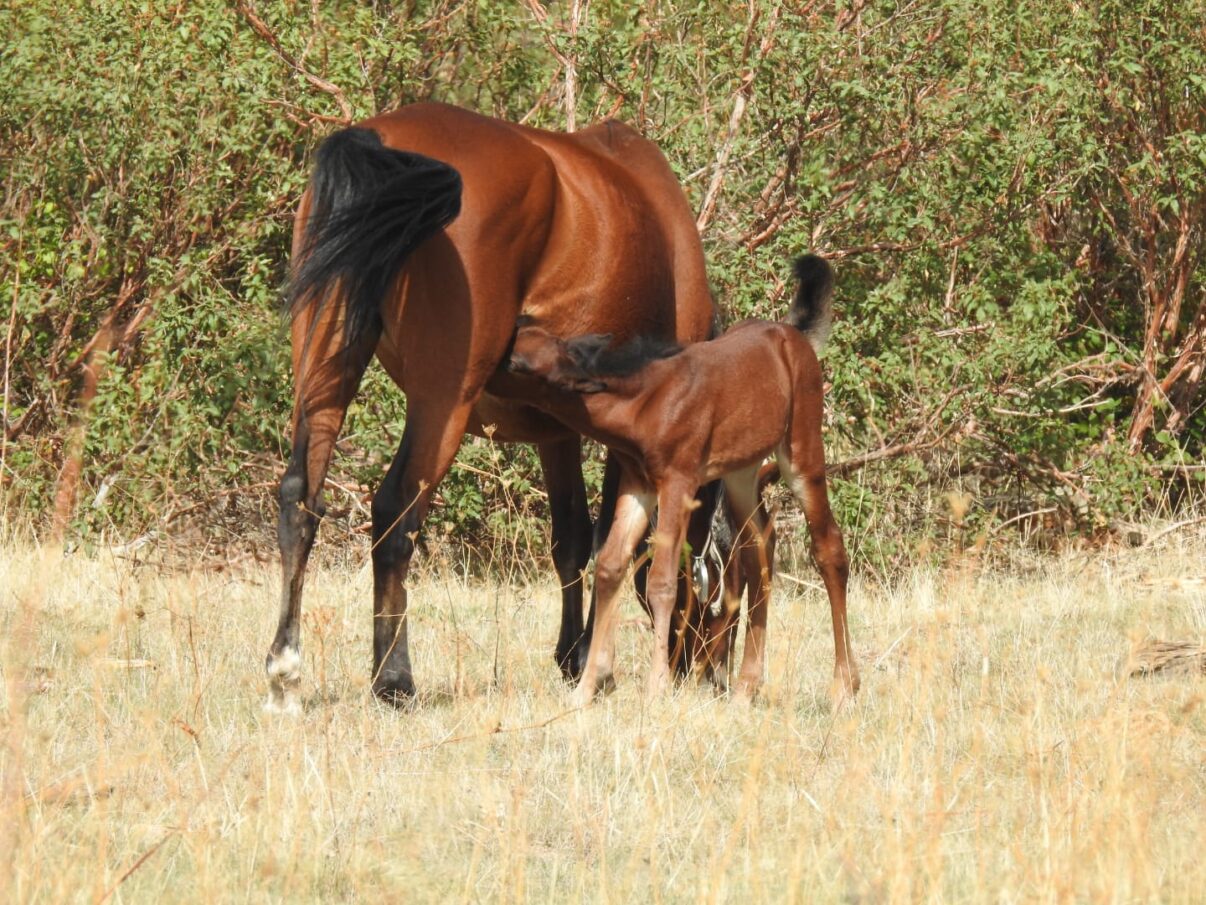
PABLO SCHAPIRA / REWILDING SPAIN
The herd of semi-wild Serrano horses that was released a year ago by Rewilding Spain in the village of Mazarete (Guadalajara), with the aim of promoting natural grazing in the area, has grown with the birth of a new foal, which increases the herd up to 13 specimens. The herd lives in Solanillos mount, an area owned by Diputación de Guadalajara (province government).
This new arrival at the herd, which has settled in a 1,485 hectares area, is very good news and shows the positive adaptation that horses are having in the Iberian Highlands landscape (Sistema Ibérico Sur). Here, the Serrano horses – an endangered native breed from the Spanish Central mountains– are carrying out the invaluable task of clearing scrub and bushes, thus contributing to fire prevention and pushing biodiversity in the forest.
The role of large herbivores and natural grazing is essential for the restoration of healthy ecosystems: horses provide weed control and also facilitate the growth of a greater number of plant species, which contributes to the general biodiversity, and open new spaces, which means natural forest management.
Prominent protagonist of the forest regeneration
All these elements make of the mountain horses in Mazarete prominent protagonists of the regeneration of the forest that is taking place in the area, that was severely affected by large fires in 2005. With natural grazing, forest regeneration is faster and richer in terms of biodiversity, as well it increases forest resilience to fires.
Rewilding Spain is constantly monitoring the health status of horses and their adaptation, as well as studying the effects the horses’ activity has on this environment. This is possible thanks to the collaboration between Rewilding Spain, ARREA and Micorriza associations, and Apadrina un Árbol Foundation.
Given the positive results that have occurred so far, it is planned to increase the herd with the arrival of new horses to reach up to thirty animals.
An opportunity for the breed survival
Involving the Serrano horse (caballo serrano) in rewilding efforts will help to safeguard the animal’s continued existence. The breed, which has its origin in one of the three primitive horse ecotypes of the Iberian Peninsula, is believed to be closely related to the Losino horse, but genetic studies are still needed to clarify its relationship with the other peninsular breeds. This is certainly a very old breed that has inhabited the mountains and plateaus of the Iberian interior for centuries, as evidenced by different medieval documents and photographs taken at the beginning of the twentieth century.
Serrano horses have been traditionally used for jobs such as threshing, and transporting people and timber, and were allowed to roam municipal forests when not working. They were also highly valued for breeding mules (a cross between a donkey and a horse). The arrival of mechanisation and rural depopulation in the 1960s and 1970s meant the breed ceased to have a function, and many animals were sold or slaughtered. Fortunately some horses were abandoned or escaped, managing to survive, breed and form wild herds in the mountains.
Natural grazing as part of the Iberian Highlands initiative
Boosting natural grazing is one of the actions involved in the Iberian Highlands rewilding initiative, a long-term action plan that Rewilding Spain has implemented in a landscape covering 850,000 hectares located in the provinces of Cuenca, Guadalajara and Teruel. For the implementation of the initiative, it has the support of Rewilding Europe and funding from the Endangered Landscapes Programme and the Cartier for Nature Foundation.